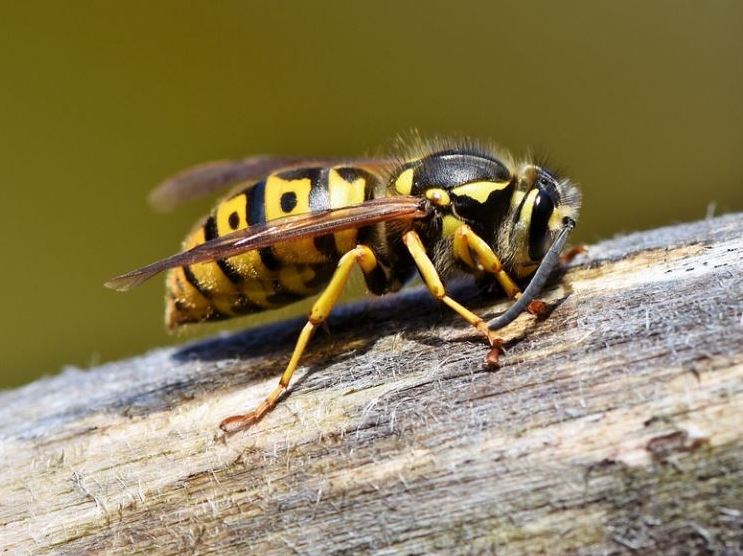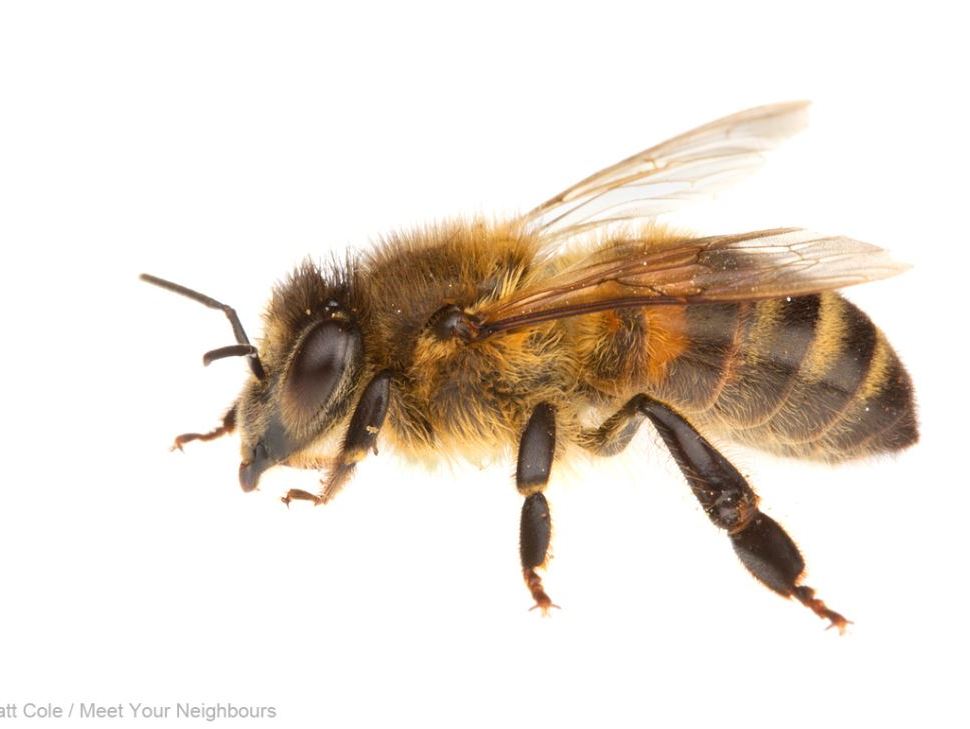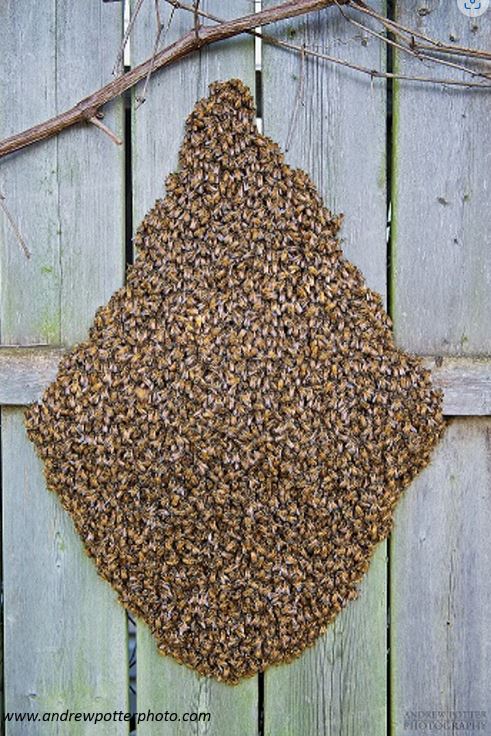Michigan Beekeepers Association |
Problem and Unwanted Bees
Do you have unwanted bees that need to be removed? Please read the information below, then use the links for more information or to find someone who can help.
Additional information can be found on this MSU-E Pollinators & Pollination page: What should I do if I find a swarm of bees? - Pollinators & Pollination (msu.edu). (Please note that many of the links in the article circle back to this website.)
Step 1: Confirm that you are dealing with honey bees. |
Most beekeepers will work with honey bees, but not wasps and hornets. Before you call a beekeeper, confirm that you have honey bees. Take a photo if you can, even of a dead bee – it will help the beekeeper know what they are dealing with and may save them a trip. |
This is NOT a honey bee. It is a wasp called a yellow jacket. Notice that it is striking yellow and black and is hairless. Yellow jacket colonies become nuisances near the end of summer, but they will die over winter. If they are in a location where they are a problem, you can remove them by spraying them or calling an exterminator. (Use appropriate spray and follow directions to avoid harming non-target insects.) Other types of Michigan bees can be seen on this MSU poster. |
This is a honey bee. Note that she is fuzzy and amber/dark brown striped (not yellow and black). If your bees look like this, then you can call a beekeeper. Even though honey bees are lovely animals that help pollinate our food, they can be problems when they take up residence in or near our homes. Other types of Michigan bees can be seen on this MSU poster. |
Step 2: Determine if you have a swarm or an established colony. |
In a swarm of honey bees the bees will be out in the open – they will often be hanging from a tree or other upright object; you'll see the bees clinging together like in the photos below. Swarming is a natural event. The bees are on their way to a new home and are simply on a "layover" that may last from several hours to a day or two. Depending on the time of year, you might find a beekeeper happy to take care of your swarm at no charge to you. Check our Swarm Removal Page for more information and to find a beekeeper in your area. If there is no one listed for your area, contact the beekeeping club that is nearest to you. |
In a swarm of honey bees the bees will be out in the open – they will often be hanging from a tree or other upright object; you'll see the bees clinging together like in the photos at right. Depending on the time of year, you might find a beekeeper happy to take care of your swarm at no charge to you. Check our Swarm Removal Page for more information and to find a beekeeper in your area. If there is no one listed for your area, contact the beekeeping club that is nearest to you. |
An established colony will have honey and comb and be living and storing food in their location (compared to a swarm, which is hanging out temporarily while they look for a new home). An established colony may be living in the walls of a building, under a deck, in a tree, etc. If you have an established colony, you will need a “cut out”. This is very different from swarm removal. It is much more work to remove a colony; you can expect to be charged for this service. If you have bees in the walls of your house, you will have to have them removed – killing the colony often results in worse problems as the unprotected nest will attract a multitude of pests. For more information and to find a beekeeper who does removals, check our Cut-out Page. If there is no one listed for your area, contact the beekeeping club that is nearest to you. |




